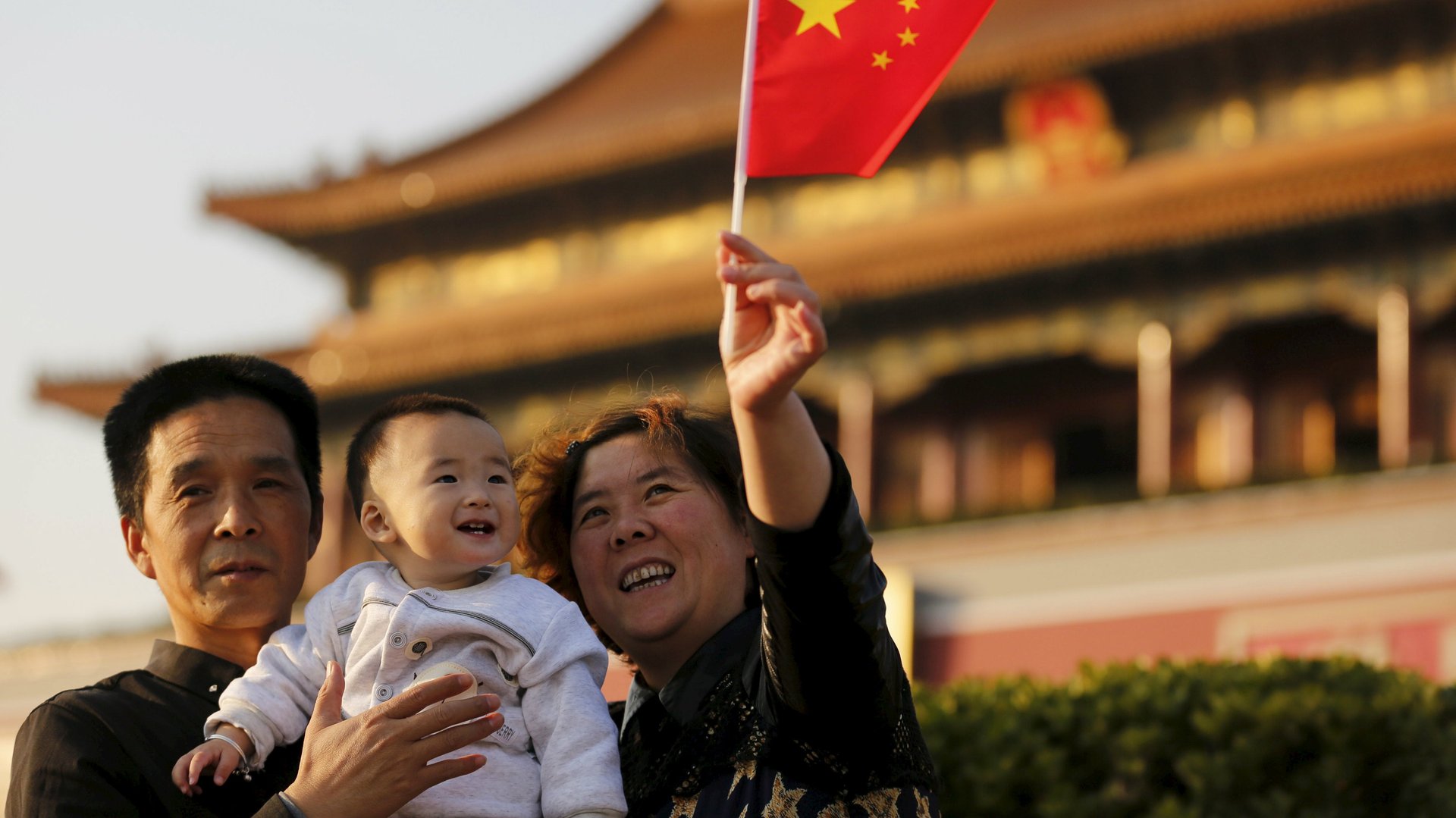Births in China are dangerously close to being overtaken by deaths
China’s economy recovered substantially from the coronavirus pandemic in 2021, but its seemingly buoyant growth rate is overshadowed by a challenge that will be hard to fix with monetary or fiscal policy—a rapidly plunging birth rate.


China’s economy recovered substantially from the coronavirus pandemic in 2021, but its seemingly buoyant growth rate is overshadowed by a challenge that will be hard to fix with monetary or fiscal policy—a rapidly plunging birth rate.
China’s Statistics Bureau announced today (Jan. 17) that GDP expanded by 8.1% in 2021 from a year earlier, beating Beijing’s 6% target. This is partly thanks to its strong exports and the low base in 2020, when China had its first quarterly contraction in GDP in decades due to the pandemic.
China’s economy in 2021 experienced “continuous and steady recovery…and maintained the leading position in economic growth and epidemic prevention and control in the world, with major indicators reaching the expected targets,” wrote the Statistics Bureau. “However, we must be aware that the external environment is more complicated and uncertain, and the domestic economy is under the triple pressure of demand contraction, supply shock and weakening expectations,” it said.
For this year, economists have already flagged risks to the growth rate from omicron outbreaks and China’s return to covid lockdowns, as well as the slowing real estate sector, as seen through real estate giant Evergrande’s woes. But beyond that, it’s China’s declining working age population that will challenge economic growth.
What will China’s GDP growth be in 2022?
Despite recovering faster than most major economies last year, China’s growth lost steam in the second half. Quarterly growth slowed down from 18.1% in the first quarter 2021 to 4% in the last quarter year-on-year, because of China’s sluggish consumption, a series of crackdowns on the private sector that hurt employment, as well as a resurgence of coronavirus cases that led to lockdowns in cities such as Xi’an in the past month. Monthly retail sales in December dropped to 1.7%, compared to 3.7% estimated by economists polled by Reuters.
“The 2021 GDP growth is slightly better than expected, but it is also built on a downward revision of the 2020 number. This does not change the overall trend that the overall economy is decelerating from the cyclical rebound,” Gary Ng, Asia-Pacific economist at the investment bank Natixis, told Quartz. China revised its 2020 GDP growth down from 2.3% to 2.2% in December last year.
Raymond Yeung, the chief economist for Greater China at the ANZ Banking Group, told Quartz that he expects weakness in domestic consumption to continue amid covid uncertainty. He also noted that authorities are already taking steps to loosen policy–China cut a key interest rate for some medium-term loans today in nearly two years—to address growth in 2022.
Citing the stricter restrictions to control omicron, Goldman Sachs last week cut its forecast for China’s economic growth this year from 4.8% to 4.3%, citing a likely higher average level of restriction for containing the omicron variant, while Yeung of ANZ expects China to set its official growth target to around 5%.
Despite the challenges facing China’s economy, per capita disposable income grew 9% in nominal terms year-on-year, reaching 35,128 yuan ($5,500) in 2021.
China’s population in 2021
After pandemic threats to the economy eventually abate, and China addresses concerns over excessive debt, the country’s low birth rate will be one of the most significant threats to its growth going forward.
Alongside the release of the GDP data, the government said that China’s birth rate fell to 7.52 births per 1,000 people last year, the lowest in the communist country’s history. Overall, China recorded around 10.6 million births, compared with around 10.1 million deaths, meaning the country’s 1.4 billion population had a net increase of merely 480,000 people last year, according to the Statistics Bureau. The figures could be revised later in the year as more data becomes available.
From 2000 to 2016, China’s newborns largely stayed within the range of 16 million to 17 million a year. In 2016, births actually rose after the country abolished the one-child policy, but have declined sharply every year since. The 2021 figure marks an 11.6% drop from 2020, and comes as many young people contend with the difficulty finding or keeping a steady job.
So far, China’s various policies, which range from allowing people to have three children to extending maternity leave, have been rejected rather than embraced by citizens. Meanwhile, a proposal from well-known Chinese economist Ren Zeping, who suggested the country print money and set up a $300 billion annual fertility fund appears to have annoyed Beijing—as Ren has been banned from posting on Weibo.
The problem is that China is up against demographic momentum set in motion by the one-child policy. The size of younger generations is shrinking, which means the number of women in their childbearing years is too. In the last 15 years, the number of women of reproductive age fell by about 40 million. Meanwhile, the share of women aged 20-24 of the overall female population dropped from 9% in 2015 to 6.6% in 2020.
“The increasingly low birthrate will definitely be a headache for the Chinese government, which explains the slew of policies we see in recent years to tackle this problem,” said Ng, of Natixis. “The key is whether China manages to increase productivity through moving away from the labor-intensive industries and climbing the tech ladder, which is essential in buffering the drag from a smaller working population. Otherwise, a decline in total and working population without a rise in income can pose pressure on consumption, let alone other problems in pension and dependency ratio,” he said.